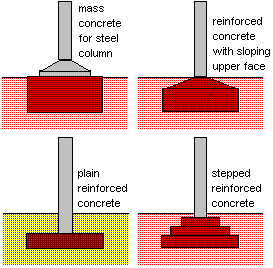Aqueduct::
An aqueduct is an artificial channel through which water is transferred from one place to another. Aqueducts can be made of many different types of materials, such as brick, concrete, metal or wood, and constructed in a variety of ways, for instance as tunnels, canals or bridges.
An aqueduct can transport a small amount of water as well as a large enough amount that watercraft can even be transported through it, and the water can be moved through the use of pumps or simply by gravity.
The main use of the aqueduct is to transport clean water to a large population of people, in a city for example, but they are also used to irrigate crops where little or no water naturally occurs. Still another use of the aqueduct is for transportation since they can allow large barges to pass over difficult terrain such as valleys and ravines.
Most notably in the city of Rome, some aqueducts still stand and the ones that were once in operation were used to transport millions of gallons of water throughout Roman colonies each day. Other ancient cities that utilized the aqueduct were Jerusalem and Athens. In the latter city, there was an aqueduct that was a tunnel and was 4200 feet long and bored by hand. In more recent history, London built its first aqueduct in 1609 – a 38-mile long river that brought water to the growing population of the city.
Aqueducts are still in use today, but most are constructed of pipes and other materials. In New York City in 1842, the Croton Aqueduct used iron pipes to carry water across the Harlem River over a viaduct. Other similar large aqueducts followed in various cities throughout the world, especially around Britain. One modern aqueduct of note is the Colorado Aqueduct in southern California that carries water across the desert from the Colorado River.
An aqueduct is an artificial channel through which water is transferred from one place to another. Aqueducts can be made of many different types of materials, such as brick, concrete, metal or wood, and constructed in a variety of ways, for instance as tunnels, canals or bridges.
An aqueduct can transport a small amount of water as well as a large enough amount that watercraft can even be transported through it, and the water can be moved through the use of pumps or simply by gravity.
The main use of the aqueduct is to transport clean water to a large population of people, in a city for example, but they are also used to irrigate crops where little or no water naturally occurs. Still another use of the aqueduct is for transportation since they can allow large barges to pass over difficult terrain such as valleys and ravines.
Most notably in the city of Rome, some aqueducts still stand and the ones that were once in operation were used to transport millions of gallons of water throughout Roman colonies each day. Other ancient cities that utilized the aqueduct were Jerusalem and Athens. In the latter city, there was an aqueduct that was a tunnel and was 4200 feet long and bored by hand. In more recent history, London built its first aqueduct in 1609 – a 38-mile long river that brought water to the growing population of the city.
Aqueducts are still in use today, but most are constructed of pipes and other materials. In New York City in 1842, the Croton Aqueduct used iron pipes to carry water across the Harlem River over a viaduct. Other similar large aqueducts followed in various cities throughout the world, especially around Britain. One modern aqueduct of note is the Colorado Aqueduct in southern California that carries water across the desert from the Colorado River.







.jpg)








